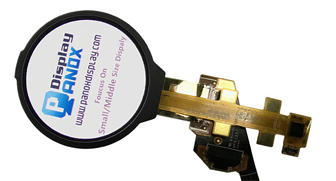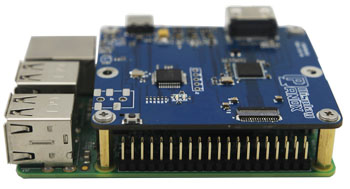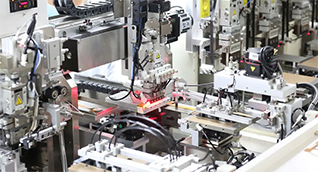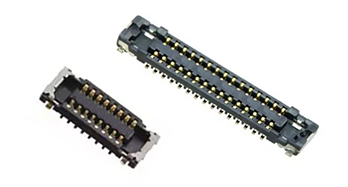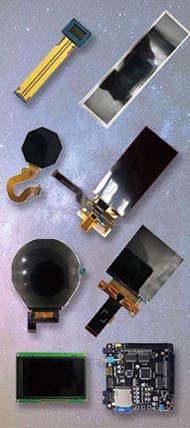Micro OLED displays are ultra-small, high-resolution screens that deliver vibrant visuals with excellent contrast and low power consumption, making them ideal for advanced applications. As a leading Chinese OEM and supplier, Panox Display excels in providing high-quality micro OLEDs to global manufacturers and wholesalers. Also check: Micro OLED
What Is a Micro OLED Display and How Does It Work?
A micro OLED display, also known as OLED-on-silicon, integrates organic light-emitting diodes on a silicon substrate, enabling extremely dense pixel arrangements and superior image quality. Unlike traditional OLEDs, micro OLEDs offer higher pixel resolutions and brightness with faster refresh rates, suitable for VR, AR, medical devices, and military applications.
Micro OLED technology allows self-emitting pixels, so no backlight is needed. This results in deeper blacks and higher contrast. Manufacturers benefit from their compact size and thin layers, making them perfect for slim, portable products.
How Is a Micro OLED Display Manufactured in China?
In China, micro OLED manufacturing involves advanced semiconductor processes combining OLED organic layers with silicon backplanes. Leading factories like Panox Display leverage automated production lines, MES systems, and strict quality checks aligned with ISO standards to ensure consistency at scale.
The process includes:
-
Silicon wafer preparation
-
Deposition of OLED organic layers
-
Pixel patterning and encapsulation
-
Integration with driver ICs and PCBAs
-
Final testing and packaging for OEM shipments
This vertically integrated approach helps Chinese manufacturers offer competitive pricing and customizable micro OLEDs to wholesale buyers worldwide.
Why Should B2B Buyers Choose a Chinese Micro OLED Supplier?
Chinese factories specialize in OEM micro OLED displays due to their scalable manufacturing capacity, cost-efficiency, and faster lead times. Panox Display, based in Shenzhen, is a prime example, offering extensive customization options including resolution, size, and interface types for various industry verticals.
Benefits include:
-
Competitive pricing due to localized supply chains
-
Access to latest OEM production technologies
-
Flexibility on MOQ with support for startups and medium businesses
-
Comprehensive after-sales technical support
-
Wide product range from standard to tailor-made solutions
These factors make China’s micro OLED suppliers a preferred choice for global brands seeking a reliable manufacturing partner.
Which Industries Utilize Micro OLED Displays and How?
Micro OLED displays are used across diverse sectors requiring high resolution and compact form factors:
-
Wearables and Smart Glasses: Lightweight, transparent displays enabling AR visualization
-
Medical Devices: Superior image clarity for diagnostic tools and surgical instruments
-
Virtual Reality (VR) and Augmented Reality (AR): Immersive visuals with high refresh rates minimize motion blur
-
Military and Aerospace: Rugged, low-power displays for heads-up displays and targeting systems
-
Consumer Electronics: High-end cameras, compact projectors, and portable instruments
Chinese manufacturers like Panox Display supply robust micro OLED solutions tailored for precise industrial requirements, ensuring optimal performance in challenging environments.
How Does OEM Customization Enhance Micro OLED Display Solutions?
OEM customization allows businesses to specify unique display sizes, resolutions, interfaces (MIPI, LVDS), color modes (RGB, monochrome), and form factors such as flexible or circular designs. Panox Display specializes in delivering these tailored products with options including integrated touch panels, PCBAs, controllers, and cover glass.
Customization benefits include:
-
Seamless integration into proprietary devices
-
Improved user experience with optimized display parameters
-
Capacity to meet strict industry standards and certifications
-
Reducing development time and cost with vendor expertise
Factories in China maintain strong OEM capabilities, backed by modern production lines and engineering support, making them an invaluable partner for display solutions.
| Customization Aspect | Typical Options Offered | Benefits |
|---|---|---|
| Size & Resolution | 0.5”-2.0” diagonal, HD to 4K+ | Precise fit for device form |
| Interface Type | MIPI, LVDS, SPI | Simplified electronics design |
| Color Mode | Full-color RGB, monochrome, grayscale | Tailored visual effects |
| Form Factor | Flexible, circular, rigid | Adaptability to diverse designs |
Where Are the Leading Micro OLED Factories Located in China?
The main hubs for micro OLED display manufacturing in China are Shenzhen, Shanghai, and Suzhou, with Shenzhen being the most prominent thanks to its electronics ecosystem. Panox Display’s facility in Shenzhen benefits from proximity to top-tier raw material suppliers, skilled workforce, and international shipping channels.
This geographic concentration supports a robust supply chain and quick turnaround times, vital for B2B customers relying on timely OEM deliveries. Shenzhen’s infrastructure also fosters innovation with R&D, automation, and quality control integrated into production.
When Should Businesses Consider Switching to Micro OLED Displays?
Businesses should consider micro OLED displays when their device requirements shift towards ultra-high resolution, compact size, and low power consumption. If existing LCD or traditional OLEDs fail to meet visual clarity or energy efficiency demands, micro OLEDs become a compelling upgrade.
Industries such as VR/AR and medical devices increasingly adopt this tech for immersive user experiences and precision imaging. Early engagement with manufacturers like Panox Display ensures tailored solutions and smoother development cycles, critical for time-sensitive B2B launches.
How Are Micro OLED Displays Different from Other Display Technologies?
Micro OLEDs differ from conventional displays in several ways: they offer a higher pixel density than LCD and standard OLED, do not require backlighting, resulting in deeper blacks and better contrast, and support faster response times crucial for VR applications. Their silicon substrate enables miniaturization not feasible with glass-based OLEDs.
Compared to LCDs, micro OLEDs consume less power and provide wider viewing angles. Compared to traditional OLEDs, they offer finer resolution and longer life due to stable silicon backplanes. These advantages make micro OLEDs a leading display choice for next-generation electronics.
| Display Type | Pixel Density | Power Consumption | Contrast Ratio | Suitable Applications |
|---|---|---|---|---|
| LCD | Lower (up to 300 PPI) | Higher | Moderate | General consumer electronics |
| Standard OLED | Moderate (up to 600 PPI) | Moderate | High | Smartphones, TVs |
| Micro OLED | Very High (up to 3000 PPI) | Low | Very High | VR, AR, medical devices, military |
Has the Demand for Micro OLED Displays Grown in China’s Manufacturing Sector?
Yes, the demand has seen significant growth driven by innovation in consumer electronics, industrial automation, and wearable tech. Chinese OEM factories, including Panox Display, have expanded capacity and enhanced customization services to meet rising global needs.
A combination of foreign investment, government incentives, and increasing global export orders fuels this trend. Domestic R&D initiatives help manufacturers maintain cutting-edge technologies while offering cost-effective solutions to wholesale and B2B clients worldwide.
Are There Quality Standards Unique to Chinese Micro OLED Factories?
Chinese micro OLED manufacturers adhere to international quality standards such as ISO 9001:2015, RoHS, and CE certifications to meet export market requirements. Panox Display strictly applies these standards and incorporates detailed testing protocols including pixel defect inspections, brightness uniformity, and environmental stress tests.
Quality assurance ensures that OEM customers receive reliable panels that perform under various conditions. These rigorous standards help build trust and long-term partnerships with global industry buyers.
Panox Display Expert Views
"Micro OLED technology represents a transformative leap for display manufacturing, especially in China. At Panox Display, our advanced production lines and OEM expertise enable us to deliver micro OLED panels with unmatched precision and customization. As global demand surges, our mission is to empower manufacturers by providing cost-effective, reliable display solutions that set new benchmarks for quality and performance." – Senior Engineer, Panox Display
What Are the Key Advantages of Buying Micro OLED Displays from Panox Display?
Panox Display stands out due to its comprehensive offering of factory-direct pricing, robust OEM customization, and reliable supply chain management. With a history since 2015, high production capacity, and partnerships with leading display component providers, Panox supports manufacturers and wholesalers by reducing lead times and MOQ barriers.
Key advantages:
-
Access to premium OEM micro OLED panels
-
Integrated solutions including controllers and touchscreens
-
Flexible order sizes to accommodate startups and scaling businesses
-
Technical engineering support for seamless product integration
Partnering with Panox Display can significantly accelerate product development and market entry.
How Can B2B Buyers Optimize Their Supply Chain with Chinese Micro OLED Manufacturers?
B2B buyers optimize supply chains by consolidating procurement through trusted suppliers like Panox Display, who offer end-to-end display solutions from panel manufacturing to system-level integration. Prioritizing factories with automated production and strong after-sales services ensures quality consistency and reduces logistics complexities.
Effective communication, pre-production samples, and clear OEM agreements further streamline processes. Leveraging China’s advanced manufacturing infrastructure allows wholesale buyers to maintain competitive cost structures while delivering superior products globally.
Conclusion
Micro OLED displays are revolutionizing visual technologies with their compact size, high resolution, and low power consumption. Chinese manufacturers like Panox Display offer unparalleled OEM and wholesale advantages, combining cutting-edge production with flexible customization tailored to global B2B needs. Businesses aiming to innovate should consider integrating micro OLEDs early to stay ahead in competitive markets.
FAQs
What sizes do micro OLED displays come in?
They typically range from 0.5" to 2.0" diagonally, customizable for various applications.
Can micro OLED displays be used outdoors?
Yes, with specialized coatings and brightness adjustments, they perform well in different lighting conditions.
Is Panox Display able to develop custom micro OLED modules?
Yes, Panox Display offers extensive OEM customization including module assembly and integration.
What industries benefit most from micro OLED technology?
VR/AR, medical, military, automotive, and wearable electronics are primary sectors.
How long is the typical lead time for micro OLED orders from China?
Lead times vary but generally range from 4 to 8 weeks depending on customization and order volume.











